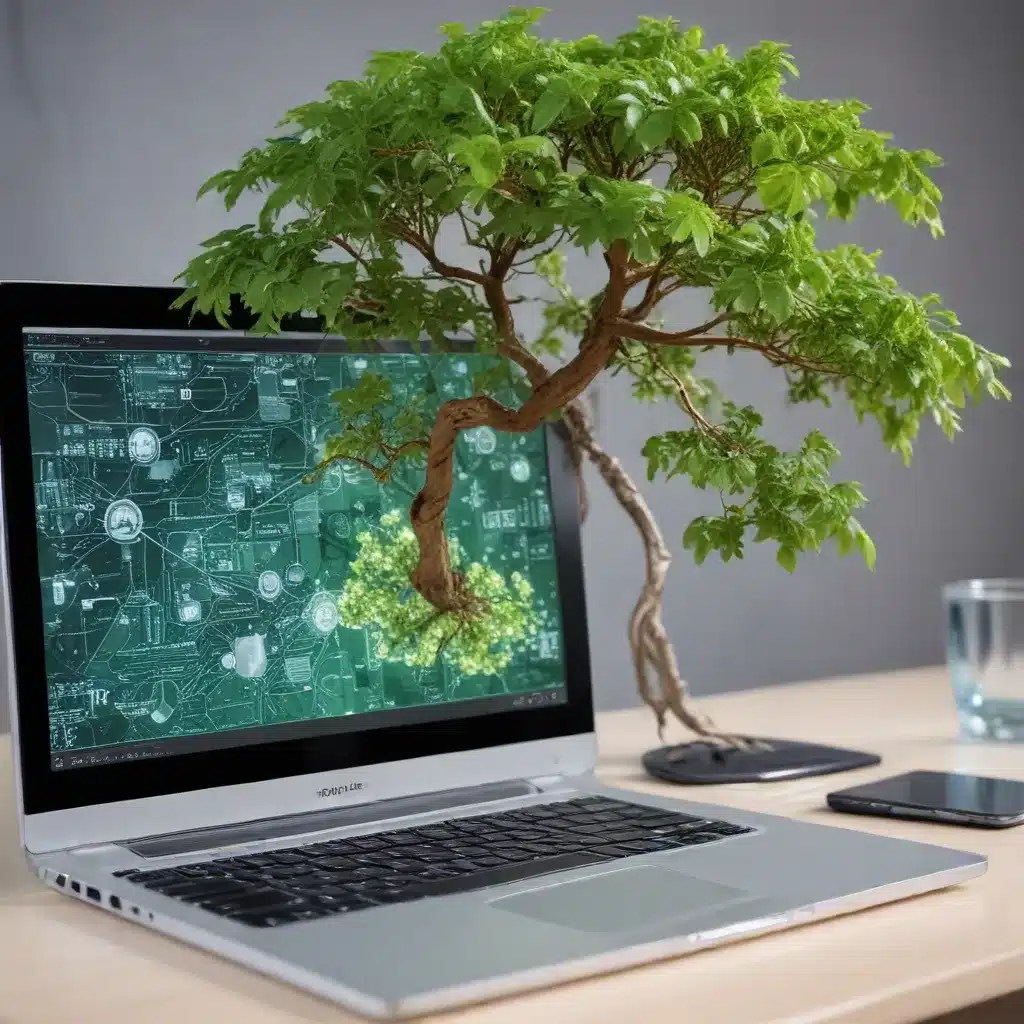
The Evolution of Information Systems and the Drive Towards Sustainability
In the ever-evolving landscape of technology, the field of information systems has experienced a remarkable transformation, with a growing emphasis on sustainability-oriented computing. As we navigate the challenges of the 21st century, the integration of sustainable practices into the design, development, and deployment of information systems has become increasingly crucial. This article will explore the emerging trends in information systems that are shaping a more eco-friendly and resource-conscious future.
The Rise of Sustainable Computing
The concept of sustainable computing has gained significant traction in recent years, driven by the growing awareness of the environmental impact of information technology. Researchers have recognized that the traditional models of information systems, characterized by energy-intensive data centers, resource-intensive hardware, and wasteful software practices, are no longer sustainable in the long run. As a result, the field of information systems has witnessed the emergence of a new paradigm – sustainability-oriented computing.
Sustainability-Oriented Computing: A Holistic Approach
Sustainability-oriented computing is a multifaceted approach that aims to address the environmental, social, and economic aspects of information systems. This holistic perspective encompasses various strategies and technologies, including:
-
Energy-Efficient Hardware: The design and manufacturing of energy-efficient computer hardware, such as low-power processors, energy-saving storage devices, and innovative cooling systems, have become a primary focus. Manufacturers are now prioritizing the development of hardware that minimizes energy consumption and carbon footprint.
-
Renewable Energy Integration: The integration of renewable energy sources, such as solar, wind, and hydroelectric power, into the infrastructure of data centers and other information technology facilities is gaining traction. This shift towards renewable energy helps reduce the reliance on fossil fuels and lowers the overall carbon emissions associated with information systems.
-
Virtualization and Cloud Computing: The adoption of virtualization technologies and cloud computing has enabled the consolidation of physical infrastructure, leading to more efficient resource utilization and reduced energy consumption. By leveraging cloud-based services, organizations can minimize the need for on-premises hardware and centralize the management of computing resources.
-
Sustainable Software Design: Software developers are increasingly incorporating sustainable design principles into their development practices. This includes optimizing code for energy efficiency, minimizing resource consumption, and designing software that promotes eco-friendly user behavior.
-
Circular Economy Principles: The concept of a circular economy, which emphasizes the reuse, recycling, and repurposing of materials, is being applied to information systems. This approach aims to reduce electronic waste, extend the lifespan of hardware, and encourage the adoption of more sustainable practices in the IT industry.
-
Collaborative Efforts and Standards: Various industry organizations, research institutions, and government agencies are collaborating to establish standards, guidelines, and best practices for sustainable information systems. These collaborative efforts help drive the adoption of sustainability-oriented computing and ensure the consistent implementation of eco-friendly practices across the industry.
The Impact of Sustainability-Oriented Computing
The shift towards sustainability-oriented computing has the potential to bring about significant benefits, both for the environment and the broader society.
Environmental Benefits
By implementing sustainable practices in information systems, organizations can contribute to the reduction of greenhouse gas emissions, energy consumption, and electronic waste. This, in turn, helps mitigate the environmental impact of the IT industry and supports global efforts to combat climate change.
Economic Advantages
Sustainable computing practices can also lead to long-term cost savings for organizations. The adoption of energy-efficient hardware, renewable energy sources, and cloud-based services can result in reduced operational expenses and lower maintenance costs. Additionally, the circular economy principles applied to information systems can lead to the development of new business models and revenue streams.
Social Impacts
Sustainability-oriented computing can have positive social impacts as well. By addressing the environmental concerns associated with information systems, organizations can contribute to the well-being of local communities and promote a more sustainable future. Moreover, the development of eco-friendly IT solutions can lead to the creation of new “green” jobs and foster a more environmentally conscious workforce.
Challenges and Considerations
While the transition towards sustainability-oriented computing holds immense promise, it also presents several challenges that must be addressed:
-
Technological Barriers: The development and integration of cutting-edge sustainable technologies, such as advanced energy-efficient hardware and innovative software design, can be technically complex and may require significant investment in research and development.
-
Regulatory Compliance: Navigating the evolving landscape of environmental regulations and sustainability standards can be a complex task for organizations, requiring continuous adaptation and compliance efforts.
-
Stakeholder Engagement: Ensuring the buy-in and active participation of all stakeholders, including employees, customers, and supply chain partners, is crucial for the successful implementation of sustainable computing practices.
-
Balancing Priorities: Organizations may face the challenge of balancing the pursuit of sustainability with other business priorities, such as cost-effectiveness, performance, and scalability. Striking the right balance is essential for the long-term viability of sustainable computing initiatives.
-
Measuring and Reporting: Developing robust metrics and reporting frameworks to track the environmental and social impacts of information systems is crucial for demonstrating the value of sustainability-oriented computing and driving continuous improvement.
Conclusion: Embracing Sustainability-Oriented Computing
The landscape of information systems is undergoing a profound transformation, with sustainability-oriented computing emerging as a pivotal trend. By integrating eco-friendly practices into the design, development, and deployment of information systems, organizations can contribute to a more sustainable future while unlocking economic and social benefits. As the demand for sustainable computing solutions continues to grow, the IT industry must embrace this shift and actively participate in the development of innovative, energy-efficient, and resource-conscious technologies. By doing so, we can collectively build a more resilient and environmentally responsible information systems landscape that serves the needs of present and future generations.


